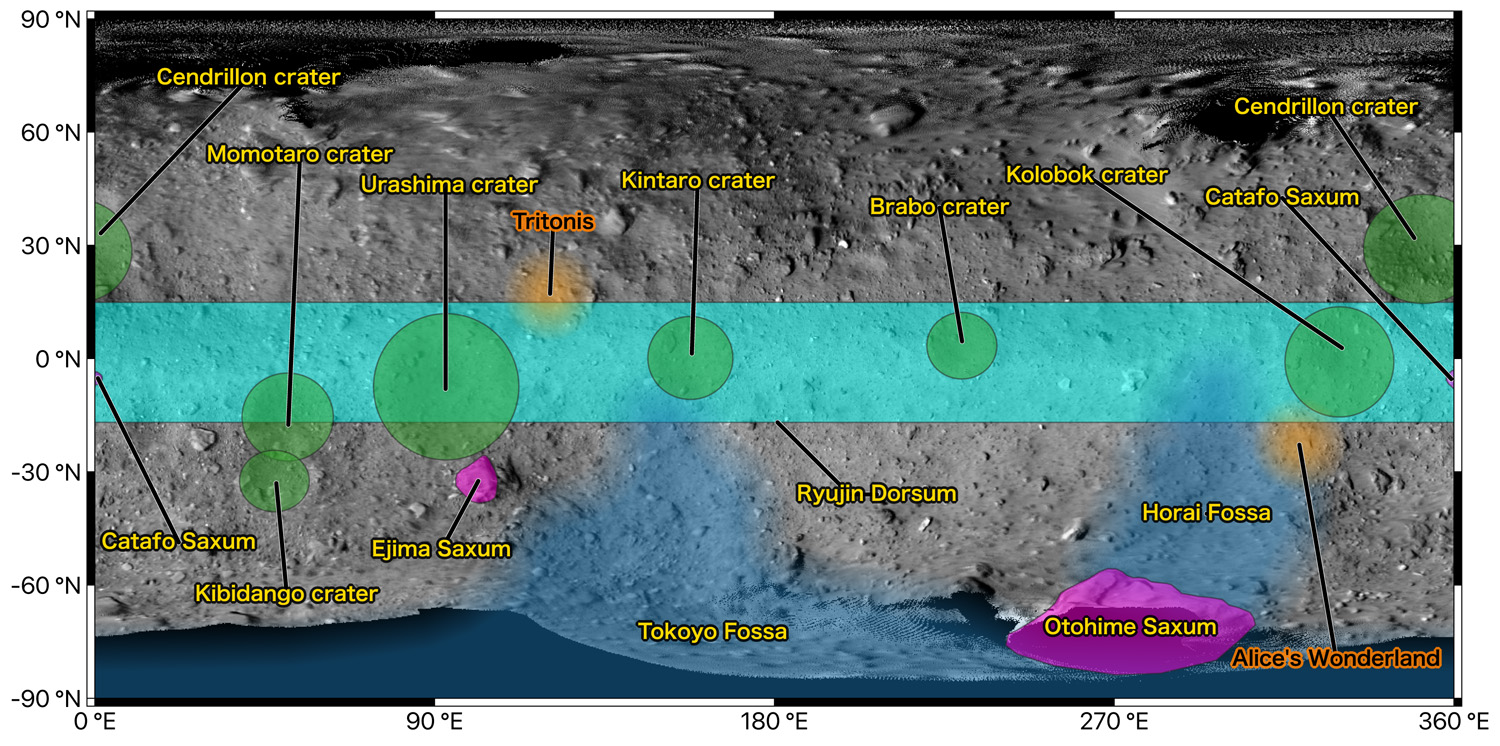A Fairy-Tale Mission: The Folklore Behind Japan's Visit to the Asteroid Ryugu
Japan's Hayabusa2 sample return mission will bring home a treasure box for scientists.

Once upon a time, a spacecraft made a dramatic quest to a distant land to bring back a treasure — and some science.
And that spacecraft, Japan's Hayabusa2 mission, is sticking with the fairy-tale theme for its naming conventions on the asteroid Ryugu. The asteroid's name, that of its single giant boulder, and that of the mission's landing site all take their names from one well-known story, as do several other sites on Ryugu. Other features on the space rock come from children's stories.
Hayabusa2 arrived at Ryugu on June 27, 2018. Since then, it has spent time studying the asteroid, dropping a lander and two small robotic rovers onto its surface. It has also fired an explosive into the surface that allowed the spacecraft to collect samples that will be carried to Earth when Hayabusa2 turns toward home, in December 2020.
Related: Look Out Below! Japan's Hayabusa2 Drops Target Markers on Asteroid Ryugu
Right now, the asteroid is "as mysterious as a fairy tale," Ryugu's principal investigator Seiji Sugita of the University of Tokyo, told Space.com. After Hayabusa2 completes its observations and brings home pieces of the asteroid, perhaps some of that mystery will become clearer.
The tale itself
The asteroid itself is named for Japanese folklore, in which Ryūgū-jō is the name of a dragon's palace beneath the sea. Its most famous appearance comes in the story of Taro Urashima, which Sugita called "a very sappy Japanese fairy tale."
Urashima is a kind fisherman who rescued a sea turtle from a group of children who were mistreating it. The sea turtle returns to Urashima few days later and invites him to join her at Ryugu, a castle under the sea. The fisherman accepts the invitation and journeys beneath the ocean with the turtle.
Get the Space.com Newsletter
Breaking space news, the latest updates on rocket launches, skywatching events and more!
"He had a very beautiful time in the sea-bottom palace for three days," Sugita said. While he was visiting the palace, Urashima met a princess, Otohime, who lived in the palace with her father, Ryujin. Unknown to him, the princess was another incarnation of the sea turtle, and she fell in love with him during his visit.
But Urashima didn't want that visit to last. "He wanted to go back to his village," Sugita said. Otohime tried in vain to persuade him to stay, but he was adamant. As a parting gift, Otohime gave Urashima a tamatebako, or treasure box, but warned him to never open it.
"I'm sure she knew he was going to open it," Sugita said.
When Urishima returned to his village, he finds that 300 years have passed, rather than the three days he experienced. "It's like a general relativity fairy tale," Sugita said. Some scientists refer to the time dilation thought to occur during light-speed travel as the Urishima effect, he said.
The distraught fisherman took out his treasure box and opened it. Suddenly a cloud appeared and Urishima aged rapidly.
According to Sugita, the Hayabasa2 team jokes that the same thing will happen to them when they finally receive the sample-return container from Ryugu. "When we open the capsule, our hair will all turn gray!" he said and laughed.
Fairy-tale names
Several of the asteroid's features take their names from the fairy tale. The largest crater on Ryugu is called Urashima, and the massive boulder, the largest on the asteroid, is known as Otohime.
When the Hayabusa2 team was initially selecting names, a problem arose: Otohime had already been used on Venus. The use of the princess' name as a feature on Ryugu was originally rejected by the International Astronomical Union (IAU), the organization responsible for the official names of solar system objects.
"But Otohime is an extremely important person in the story of Taro Urashima," Rina Noguchi and Yuri Shimaki, both scientists at the Japan Aerospace Exploration Agency, which runs the mission, wrote on the Hayabusa2 website. "How can we collect the tamatebako if Otohime is not on Ryugu?"
Because the name was important to the project, the Hayabusa2 team refined their proposal to the IAU, which eventually accepted it.
Ryugu's shape resembles a spinning top, which Hayabusa2 team members thought resembled a dragon or an ouroboros — a dragon or serpent swallowing its own tail — coiling around the asteroid. Because of that inspiration, the team named the ridge for Ryujin, the Dragon Palace ruler and father of Otohime.
Hayabusa2 continues to reveal details about this fairy-tale world, and the samples it has collected will return to Earth in late 2021. We can only hope that the mission's scientists won't age dramatically once they have their own treasure box in hand!
- Watch Japan's Hayabusa2 Land on Asteroid Ryugu in This Exciting Video
- Touchdown! Incredible Photos Show 2nd Asteroid Landing by Japan's Hayabusa2
- Now You Can Watch Japan's Hayabusa2 Shoot a Bomb at an Asteroid
Follow Nola on Facebook and on Twitter at @NolaTRedd. Follow us on Twitter @Spacedotcom and on Facebook.

Join our Space Forums to keep talking space on the latest missions, night sky and more! And if you have a news tip, correction or comment, let us know at: community@space.com.

Nola Taylor Tillman is a contributing writer for Space.com. She loves all things space and astronomy-related, and enjoys the opportunity to learn more. She has a Bachelor’s degree in English and Astrophysics from Agnes Scott college and served as an intern at Sky & Telescope magazine. In her free time, she homeschools her four children. Follow her on Twitter at @NolaTRedd









